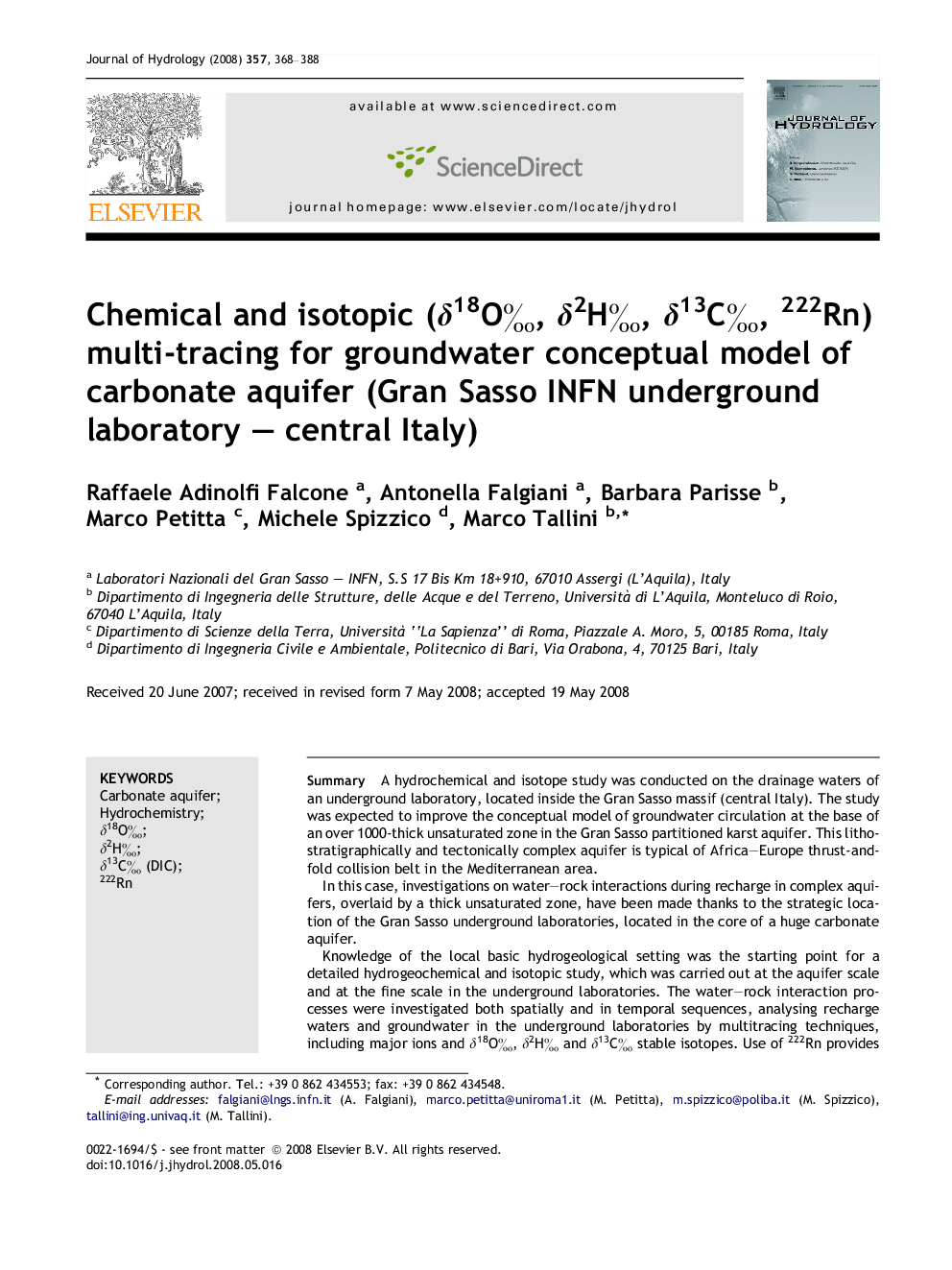| کد مقاله | کد نشریه | سال انتشار | مقاله انگلیسی | نسخه تمام متن |
|---|---|---|---|---|
| 4579287 | 1630103 | 2008 | 21 صفحه PDF | دانلود رایگان |

SummaryA hydrochemical and isotope study was conducted on the drainage waters of an underground laboratory, located inside the Gran Sasso massif (central Italy). The study was expected to improve the conceptual model of groundwater circulation at the base of an over 1000-thick unsaturated zone in the Gran Sasso partitioned karst aquifer. This lithostratigraphically and tectonically complex aquifer is typical of Africa–Europe thrust-and-fold collision belt in the Mediterranean area.In this case, investigations on water–rock interactions during recharge in complex aquifers, overlaid by a thick unsaturated zone, have been made thanks to the strategic location of the Gran Sasso underground laboratories, located in the core of a huge carbonate aquifer.Knowledge of the local basic hydrogeological setting was the starting point for a detailed hydrogeochemical and isotopic study, which was carried out at the aquifer scale and at the fine scale in the underground laboratories. The water–rock interaction processes were investigated both spatially and in temporal sequences, analysing recharge waters and groundwater in the underground laboratories by multitracing techniques, including major ions and δ18O‰, δ2H‰ and δ13C‰ stable isotopes. Use of 222Rn provides information on transit time in the aquifer. Processes proved to be typical of carbonate rocks, with clear influence of vertical movement of water on chemical–physical parameters through the unsaturated zone. Conversely, in the saturated zone, these processes proved to be dominantly affected by local geological–structural conditions.A conceptual model with dual flow velocity is proposed, directly related to the local geological-structural setting. 222Rn decay enables to calculate an effective velocity of around 10 m/day for the fracture network, through the sequence of less permeable dolomites and underlying limestone. Lag time between recharge and chemical changes in the saturated zone testifies to an effective velocity of about 35 m/day for fast flow through recent and active extensional faults.
Journal: Journal of Hydrology - Volume 357, Issues 3–4, 15 August 2008, Pages 368–388